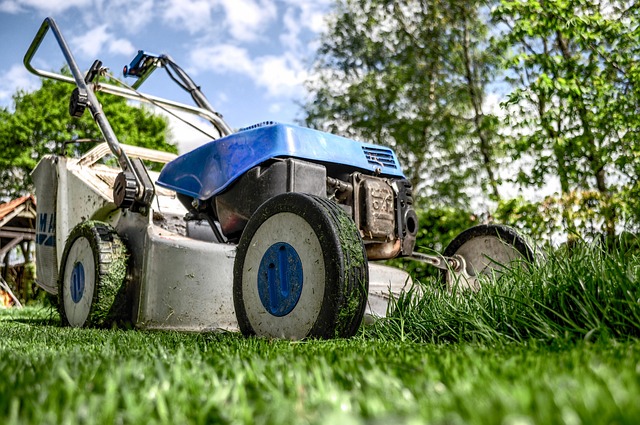Learn more about lawn mowing
Lawn mowing is more than just a weekend chore—it's a fundamental practice that shapes the health, appearance, and resilience of your grass. Understanding the right techniques, timing, and tools can transform your yard from patchy and uneven to lush and vibrant. Whether you're a first-time homeowner or a seasoned gardener, mastering the basics of mowing will help you maintain a beautiful outdoor space throughout the growing season.

Discover effective mowing techniques
The way you mow your lawn has a direct impact on its overall health and appearance. One of the most important principles is to never cut more than one-third of the grass blade length at a time. Removing too much in a single mow can stress the grass, weaken its root system, and make it more vulnerable to pests and disease. Adjust your mower height according to the season and grass type—cool-season grasses like Kentucky bluegrass thrive at around three inches, while warm-season varieties such as Bermuda grass prefer a shorter cut.
Mowing patterns also matter. Alternating your mowing direction each time prevents soil compaction and encourages upright growth. If you always mow in the same direction, grass blades can lean and create an uneven surface. Sharp mower blades are essential as well. Dull blades tear the grass rather than cutting it cleanly, leaving ragged edges that turn brown and invite disease. Sharpening your blades at least once per season ensures a clean cut and healthier turf.
Understand the best mowing schedules
Timing your mowing sessions correctly can make a significant difference in lawn quality. During peak growing seasons—typically late spring and early summer—grass grows rapidly and may need mowing once or twice per week. In contrast, during slower growth periods in early spring or fall, mowing every ten days to two weeks may be sufficient. Avoid mowing during extreme heat or drought, as cutting stressed grass can cause additional damage.
The time of day also plays a role. Mowing in the early morning when grass is wet with dew can lead to clumping and uneven cuts, while mowing in the heat of midday can stress both you and the lawn. Late afternoon or early evening is often ideal, as the grass is dry and temperatures are cooler. Consistency is key—establishing a regular mowing schedule helps maintain an even height and promotes dense, healthy growth.
Explore tools for a perfect lawn
Choosing the right mower and accessories can simplify lawn care and improve results. Push mowers are suitable for small to medium-sized yards and offer good exercise, while self-propelled models reduce effort on larger or sloped properties. Riding mowers and zero-turn models are ideal for expansive lawns, providing speed and maneuverability. Electric and battery-powered mowers are quieter and more environmentally friendly than gas models, though they may have limited runtime.
Beyond the mower itself, consider attachments and accessories. Mulching kits allow grass clippings to decompose on the lawn, returning nutrients to the soil and reducing the need for fertilizer. Bagging attachments are useful if you prefer a tidier appearance or need to collect clippings for composting. String trimmers and edgers help define borders and reach areas the mower cannot, creating a polished, professional look. Regular maintenance of your equipment—cleaning the deck, checking oil levels, and replacing air filters—extends the life of your tools and ensures optimal performance.
Gain tips for maintaining grass health
Healthy grass starts with proper mowing practices, but other factors contribute to a thriving lawn. Watering deeply and infrequently encourages deep root growth, making grass more drought-resistant. Aim for about one inch of water per week, either from rainfall or irrigation, and water in the early morning to minimize evaporation and fungal growth. Fertilizing at the right times—typically in spring and fall for cool-season grasses—provides essential nutrients that support vigorous growth.
Aeration is another important practice. Compacted soil restricts root development and water penetration, so aerating once or twice a year helps alleviate compaction and improves overall lawn health. Overseeding thin or bare spots fills in gaps and increases density, reducing the opportunity for weeds to take hold. Finally, managing thatch—a layer of dead grass and organic matter—prevents water and nutrients from reaching the soil. If thatch exceeds half an inch, consider dethatching to restore balance.
Enhance your lawn care knowledge
Continuing to learn about lawn care helps you adapt to changing conditions and refine your approach. Local extension offices and gardening clubs often offer workshops and resources tailored to your region’s climate and soil. Online forums and videos provide practical demonstrations and troubleshooting advice. Understanding your specific grass type, soil composition, and local weather patterns allows you to customize your care routine for the best results.
Experimenting with different techniques and observing how your lawn responds builds confidence and expertise over time. Keep a lawn care journal to track mowing schedules, fertilizer applications, and any issues that arise. This record helps identify patterns and informs future decisions. Remember that lawn care is an ongoing process, and small adjustments can lead to significant improvements in the health and beauty of your outdoor space.
Conclusion
Mastering lawn mowing involves more than simply cutting grass—it requires understanding techniques, timing, tools, and overall lawn health. By following proven practices such as mowing at the correct height, maintaining sharp blades, and adjusting schedules to match growth patterns, you can cultivate a resilient and attractive lawn. Investing in the right equipment and staying informed about best practices ensures your yard remains a source of pride and enjoyment throughout the year.


